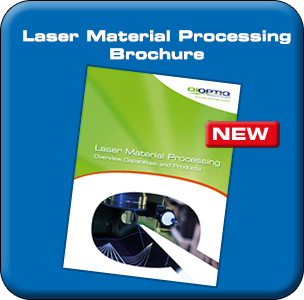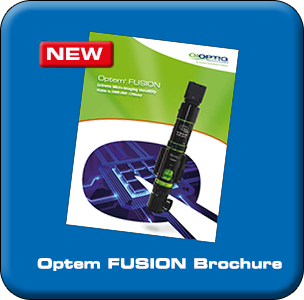- Optomechanics
- Precision Optics
- Singlets
- LINOS Achromats & Lens Systems
- LINOS Laseroptics & Lenses
- LINOS Machine Vision Solutions
- Micro Imaging
- Polarization Optics
- Mirrors
- LINOS Thin Film Coatings
- LINOS Faraday Isolators
- LINOS Laser Modulators & Pockels Cells
- Prisms
- Spectral & Neutral Filters
- Beamsplitters
- Optical Windows & Diffusers
- Optics Software
- Lightsources & Laser
- New Products
Two Stage Faraday Isolators

Technical Overview
FI-x-5TI and FI-x-5TV
Diode lasers are extremely sensitive to refl ected radiation. Standard Faraday isolators typically achieve between 30 dB and 40 dB isolation, which in some cases is not suffi cient to suppress undesirable feedback. Our two stage LINOS Faraday isolators were developed for the special requirements of diode lasers and square the standard isolation of single stage Faraday isolators. At the heart of this development is the use of two coupled isolator stages together with the best polarizers available on the market.
This configuration combines the exit polarizer of the first stage with the entry polarizer of the second stage to form one central polarizer.
Arranging the polarity of the two magnets to be opposite to each other results in two benefits: The polarization direction of the transmitted light remains unchanged in the transmission direction and the effect of both magnetic fields is enhanced. Therefore this configuration also leads to a more compact isolator and a reduction of the optical path length which in turn enhances the optical quality of the LINOS Faraday isolator.
All optical surfaces are antirefl ection coated and the surfaces normal to the beam axis are tilted. The polarizers are mounted in a way that allows easy cleaning of the external optical surfaces. This guarantees that the isolation is not reduced by residual reflections and scattering from the isolator. Based on this special design a guaranteed 60 dB isolation at the design wavelength and within the tuning range makes Linos two stage Faraday isolators the best on the market.
DLI, Overview
The isolators of the DLI-series were developed for the special requirements of diode lasers in the visible spectrum and combine the outstanding isolation of a two stage isolator with the flexibility of a tunable isolator.
The DLI isolators are easily integrated into an existing setup and can be adjusted to match any wavelength without changing the laser polarization or displacing the laser beam. The isolators can be coarsely tuned by altering the effective magnetic fi eld in the two isolator stages. A precise wavelength adjustment is possible by rotating the central polarizer with a micrometer set screw. The blocked radiation is defl ected out of the isolator at 90° with respect to the beam axis. It is not absorbed by the interior of the isolator, but is available at the side surfaces of the polarizer and the exit window.DLI Injection Locking
The DLI injection version revolves this operating mode and uses the exit window for in-coupling of the seed laser for injection locking while decoupling efficiently the master and the slave laser from each other at the same time. Like this stable mode locking (e.g. of Ti:Sapphire lasers) is simplified.
Applications
All two stage LINOS Faraday isolators are typically used to improve the power and frequency stability of diode lasers used in spectroscopy, interferometry and precision control as well as in alignment applications. Since the output polarization and the beam position are conserved for all two stage LINOS faraday isolators, the influence of the smallest feedback effects on the laser can be quantitatively examined.







 Order Catalog
Order Catalog